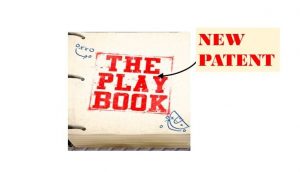 Patent professionals can do a better job providing patentability review, or "opinion," services for innovators. As most readers would recognize, a patentability review assesses whether the invention to be claimed will meet the legal requirements for patentability. In the US, this entails an assessment by a patent attorney, which can be based on a formal or informal search, whether the client’s invention is novel and non-obvious over the prior art. The rules by which a patent attorney makes a determination of patentability are well-established and would not be considered controversial by most experienced practitioners. Nonetheless, as an IP Strategist who works exclusively with clients engaged in developing and delivering meaningful innovations to consumers, I know that these entrenched patentability assessment practices deserve retooling for those clients who can be classified as "innovators." To this end, I believe that the way the patent
Patent professionals can do a better job providing patentability review, or "opinion," services for innovators. As most readers would recognize, a patentability review assesses whether the invention to be claimed will meet the legal requirements for patentability. In the US, this entails an assessment by a patent attorney, which can be based on a formal or informal search, whether the client’s invention is novel and non-obvious over the prior art. The rules by which a patent attorney makes a determination of patentability are well-established and would not be considered controversial by most experienced practitioners. Nonetheless, as an IP Strategist who works exclusively with clients engaged in developing and delivering meaningful innovations to consumers, I know that these entrenched patentability assessment practices deserve retooling for those clients who can be classified as "innovators." To this end, I believe that the way the patent
Patentability Reviews for Innovations
Better Patent Services for Innovators: Patentability Reviews
For the past 12 years as an IP Strategist, I’ve worked exclusively with clients engaged in developing and delivering innovative products to consumers. From this unique vantage-point, I think it’s time for some entrenched patentability assessment practices to be retooled for innovators. I’ve come to this conclusion because many of the ingrained patent application development processes in my profession consistently fail to properly address the non-standard nature of innovators’ products and technology when assessing the scope of patent protection that can, and should, be recommended to help these risk-takers extract maximum value from their efforts.

An example of how strategic IP-thinking differs from that of traditional patent attorney processes is that I believe
Startup Patent Strategy: US Patent Non-Publication

Patenting for the Future: A New Approach for Innovators
The traditional patent model is configured to generate protection for an already completed invention. This, by definition, is a backward-looking approach and begs the question of why people are protecting what they have done in the past, when patents are supposed to be about protecting their future. Because strategy is about defining a desired outcome and working backward, an IP Strategist like me necessarily works with clients to identify why they are seeking patent protection in the first place. Only then do we develop a plan to achieve that business goal.

Experience shows that such forward-thinking strategies help innovators stay one step ahead of competitors by enhancing their ability to protect future revenue streams that are expected to occur with
Need Broad Patents Fast? Try This.
 That title got your attention, didn’t it? It was meant to. After another successful round of patent application examinations for several clients in the last year, I thought others would like access to my proven patent acquisition methodology. Certainly, there’s a lot more than I can include in this post, and what is presented here should be considered to be only a high level introduction to my process. Moreover, every client requires focused attention to generate the desired patent protection, and not every business scenario mandates this comprehensive approach. But, for those situations where company leadership determines that strong patent protection is a key to achieving the desired business outcomes from investment in innovative products and technology, this methodology is not only recommended, it is required for success. Put simply, if you do the hard work
That title got your attention, didn’t it? It was meant to. After another successful round of patent application examinations for several clients in the last year, I thought others would like access to my proven patent acquisition methodology. Certainly, there’s a lot more than I can include in this post, and what is presented here should be considered to be only a high level introduction to my process. Moreover, every client requires focused attention to generate the desired patent protection, and not every business scenario mandates this comprehensive approach. But, for those situations where company leadership determines that strong patent protection is a key to achieving the desired business outcomes from investment in innovative products and technology, this methodology is not only recommended, it is required for success. Put simply, if you do the hard work
Why Most Innovative Companies Miss the Mark with Patents
Few patents have the intended effect of enabling long term premium profit generation for the company that brings innovative products to the market. While patent attorneys, academics, and legislators argue strenuously about the reasons that patents are flawed in this regard, I have a simple hypothesis that has been demonstrated time and again in my IP Strategy practice: too many patents read like diagrams intended for use in assembling the product from separate pieces.

Such patents typically spend most of the disclosure describing in gory detail how the pieces and parts fit together, along the lines of "flange 15 is connectable to
Value-Enhancing Patent Prosecution Strategies (Part 1 of 3)
 In my role as the IP Strategist for a number of companies that do not employ in-house patent counsel, I am charged with making sure that my clients’ patenting efforts are in tune with their desired business outcomes. This means that instead of focusing on the drafting and prosecuting of patent applications that form the basis of most patent attorneys’ practices, I work at the front end of the patenting process to design patent strategies that will enhance my clients’ business value first and foremost. When alignment is created with business goals, subsequent patenting efforts will necessarily result in protection that matters to the value of the company. In this regard, I have a number of tools in my “Patent Strategy Toolbox” that I deploy regularly when developing patent prosecution recommendations. Notably, when I mention these tools to new clients, I
In my role as the IP Strategist for a number of companies that do not employ in-house patent counsel, I am charged with making sure that my clients’ patenting efforts are in tune with their desired business outcomes. This means that instead of focusing on the drafting and prosecuting of patent applications that form the basis of most patent attorneys’ practices, I work at the front end of the patenting process to design patent strategies that will enhance my clients’ business value first and foremost. When alignment is created with business goals, subsequent patenting efforts will necessarily result in protection that matters to the value of the company. In this regard, I have a number of tools in my “Patent Strategy Toolbox” that I deploy regularly when developing patent prosecution recommendations. Notably, when I mention these tools to new clients, I
Protecting Valuable Innovations? Throw Out the Old Patent Playbook and Try Something New
In the usual situation, a patent attorney is the “ball carrier” for the inventor as a patent application moves through the Patent Office. Each “play” in the “patent game” is focused on getting a patent application to the goal line as the “win” of an issued patent. However, when the primary objective is on winning, the focus necessarily becomes the patent itself, not the reason why the “patent game” is being played in the first place.

I have learned in my 20 + years as a business-focused patent attorney there is often a huge mismatch between the coverage of a patents and the business value that the patent creates for its owner. In other
IP Strategy is Increasing Focus at Innovative Companies: Here’s Why
After more than 8 years, I can report that IP Strategy is an increasing focus at innovative companies, and there is a solid reason why this is so. By way of background, for many years, I have been part of a small minority of IP experts who advocate that companies desiring to maximize the value of their IP investments re-think the way they seek and obtain patents. In short, I and my IP Strategist peers urge companies to wrest control of their “IP destiny” from their legal service providers who have traditionally been seen as the primary drivers of the patenting process for their clients.

Of course, readers
Product Companies Must Modify Patent Strategy When Adopting Innovation as Business Model
 I recently finished an IP Strategy engagement with major consumer products corporation, where I interfaced with the head of New Product Development and Innovation Strategy. This company is embarking on a major shift in the way it brings products to market. In short, the company is transitioning from one that introduces new products with incremental improvements into the market on a regular basis, to one that focuses more on innovation. For this client, this strategy will mean that a significant portion of its product development efforts will be focused on solving unmet and identifying emerging customer needs, with the ultimate goal of introducing truly innovative consumer products that will be successful in the marketplace.
I am sure that my client's new products will be found to be highly desirable to their consumers: the
I recently finished an IP Strategy engagement with major consumer products corporation, where I interfaced with the head of New Product Development and Innovation Strategy. This company is embarking on a major shift in the way it brings products to market. In short, the company is transitioning from one that introduces new products with incremental improvements into the market on a regular basis, to one that focuses more on innovation. For this client, this strategy will mean that a significant portion of its product development efforts will be focused on solving unmet and identifying emerging customer needs, with the ultimate goal of introducing truly innovative consumer products that will be successful in the marketplace.
I am sure that my client's new products will be found to be highly desirable to their consumers: the


